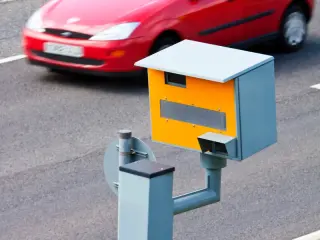
Average speed cameras are a familiar sight on UK roads, but many drivers still aren’t sure how they work. Unlike fixed-point speed cameras, these systems monitor a vehicle’s speed over distance, encouraging smoother, safer driving habits.
In this guide, we break down the technology behind them, debunk common myths, and explore how they promote road safety and compliance across the UK.
What Are Average Speed Cameras?
Average speed cameras, such as SPECS or VECTOR, calculate the average speed of a vehicle over a fixed distance using Automatic Number Plate Recognition (ANPR) technology. Unlike traditional cameras that catch drivers in the moment, these systems ensure speed compliance across a stretch of road.
This helps reduce sudden braking and rapid acceleration, which are common with fixed cameras and can increase accident risk.
How Do Average Speed Cameras Work?
When a vehicle passes through the first camera, its number plate and timestamp are recorded. The same process happens at the next point. The system calculates how long the vehicle took to travel the distance and works out the average speed. If it exceeds the posted limit, a speeding penalty is issued.
Most systems now operate across multiple lanes and in both directions, meaning switching lanes doesn’t help you avoid detection.
According to Carwow, the use of infrared and digital imaging makes these cameras effective even in low light or adverse weather conditions.
Types of Average Speed Cameras
There are several systems in operation across the UK:
SPECS: The most common type, using ANPR between two fixed points
VECTOR: Newer and often integrated with urban monitoring systems
SpeedSpike: Links up to 1,000 cameras via GPRS to monitor wider areas and bidirectional traffic, 24/7
These systems are increasingly accurate, with minimal margin for error.
Where Are Average Speed Cameras Used?
You’ll find these cameras in locations where consistent speed enforcement is vital, such as:
Motorways and dual carriageways
Roadworks zones (temporary or long-term)
Urban areas, including near schools and town centres
Why Average Speed Cameras Improve Road Safety
Speed is a leading cause of road accidents. According to Brake, one in four fatal crashes involves a speeding driver. Average speed cameras encourage consistent speeds, which:
Reduces erratic driver behaviour
Lowers accident risk
Improves journey predictability
In 2019, RAC Foundation data suggested that speed cameras helped prevent at least 220 deaths.
Stay safe: Essential Safety Tips for Road Users
Let’s clear up some common misconceptions:
1. “You can go 10% over the limit.”
This is a widely believed myth. While some forces allow minor leeway, the law states you’re liable as soon as you exceed the limit. Learn more via the AA’s speeding guide.
2. “Changing lanes avoids detection.”
Older cameras may have missed lane-switching, but modern systems track multiple lanes simultaneously.
3. “They’re just for revenue.”
While fines generate income, this is often reinvested in road safety programmes. Their primary purpose is to reduce accidents and fatalities.
4. “They don’t work in poor weather.”
Today’s systems use infrared and advanced sensors to ensure reliability regardless of lighting or conditions.
What Happens If You’re Caught?
If your average speed is higher than the legal limit:
You’ll receive a £100 fine and 3 points on your licence
You may be offered a Speed Awareness Course (if eligible)
Repeat offences can result in 12 points and a driving ban
New drivers face licence revocation for just 6 points in the first 2 years
FAQs: Average Speed Cameras
Do they work in both directions?
Yes, especially systems like SpeedSpike that monitor via GPRS.
How do I know if they’re working?
You don’t. Assume every camera is operational.
Are they on all the time?
Most operate 24/7 for full enforcement coverage.
Do they flash?
No. Average speed cameras use invisible infrared, so no visible flash is emitted.
Final Thoughts
Average speed cameras promote a more consistent and safer driving experience. They aren’t just about enforcement - they’re about prevention. By holding drivers accountable over distance rather than a single moment, these systems help reduce crashes and save lives.
As technology evolves, expect to see cameras detect even more road offences - such as mobile phone use or seatbelt violations - enhancing safety for everyone.




